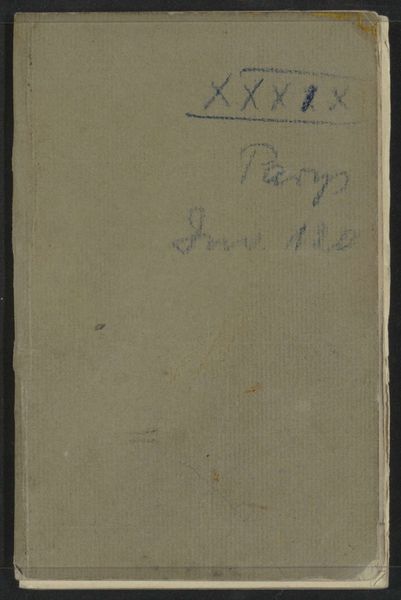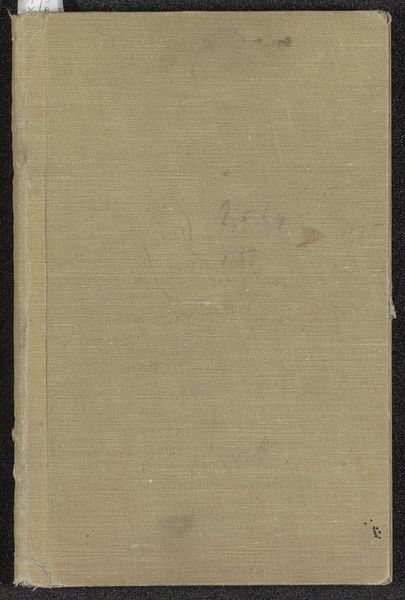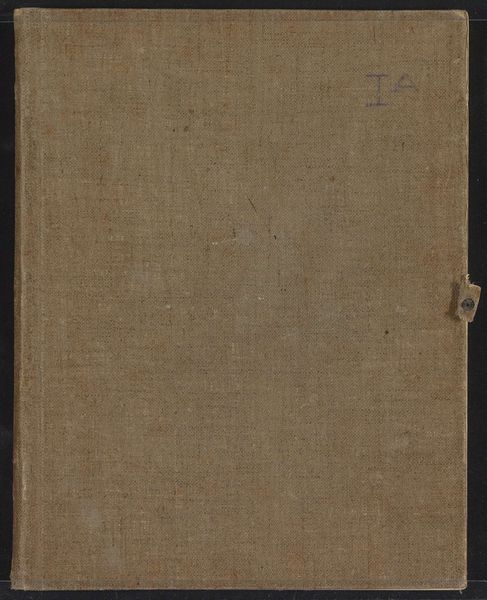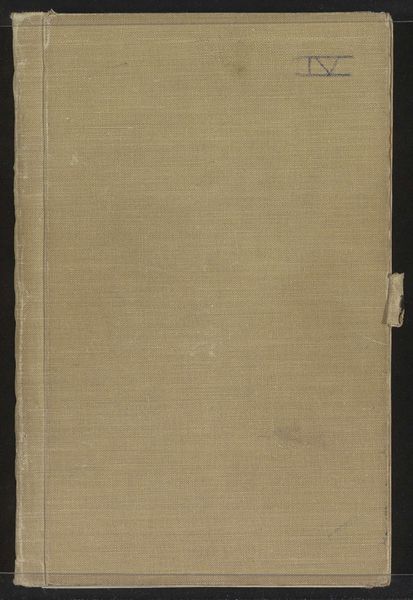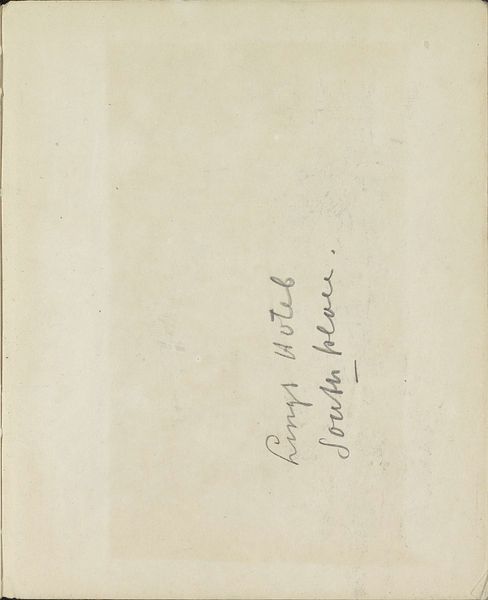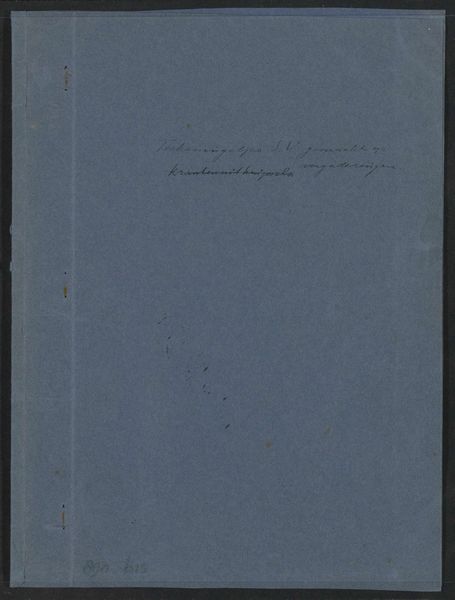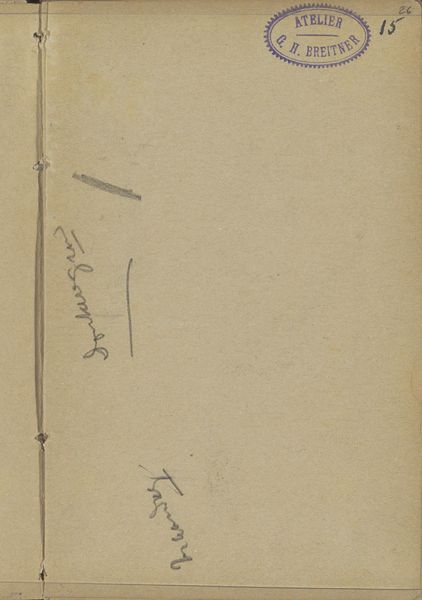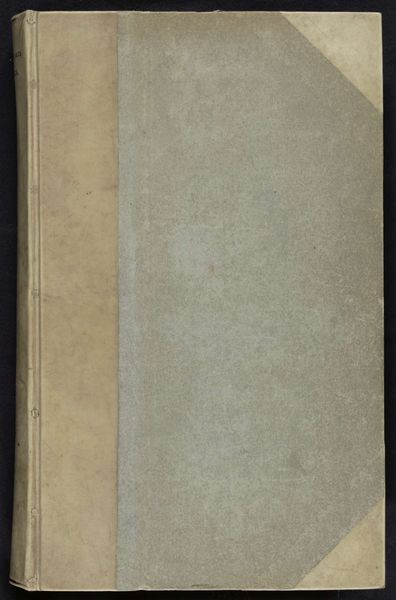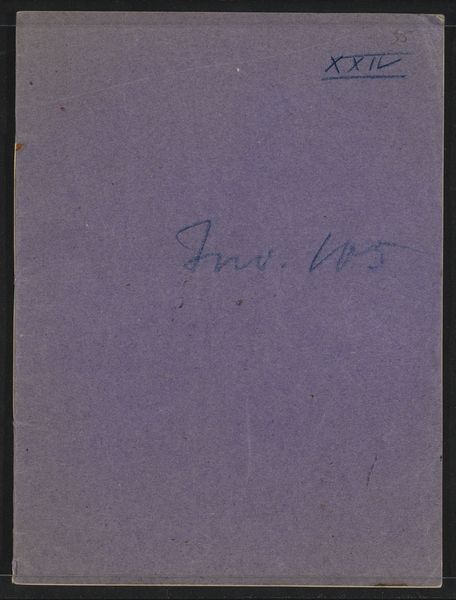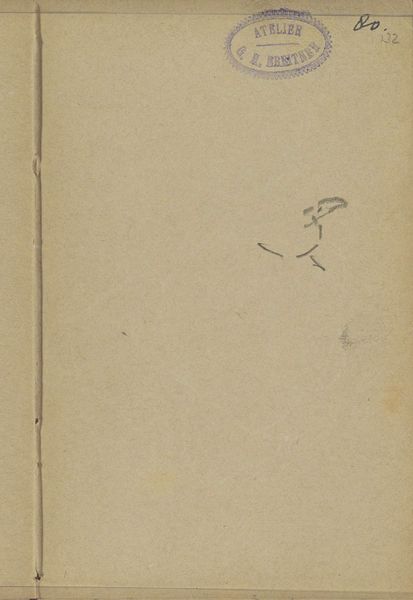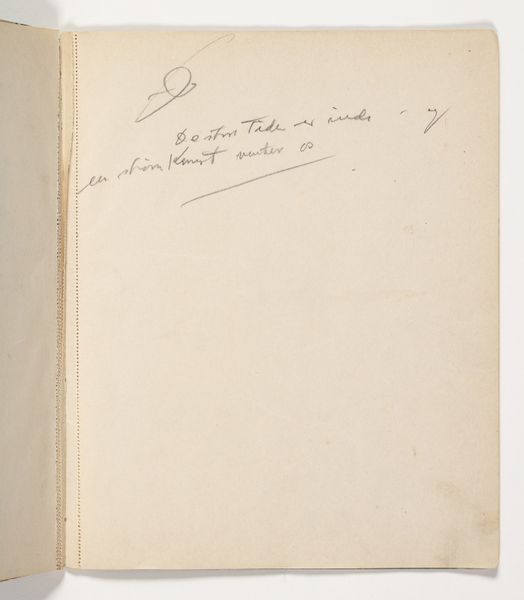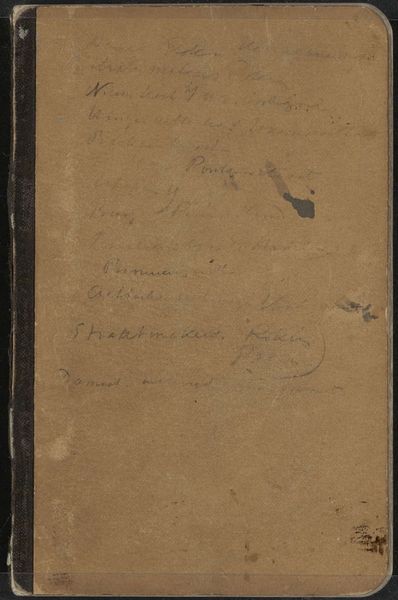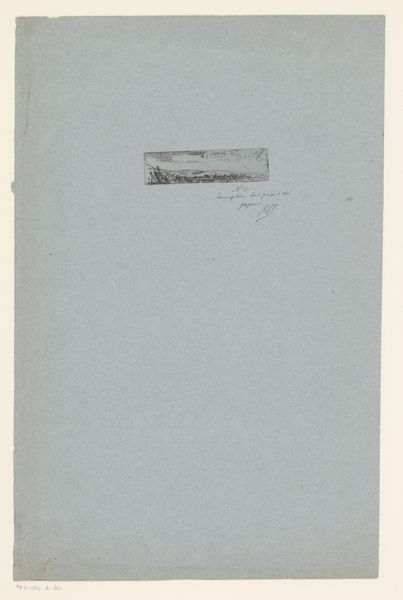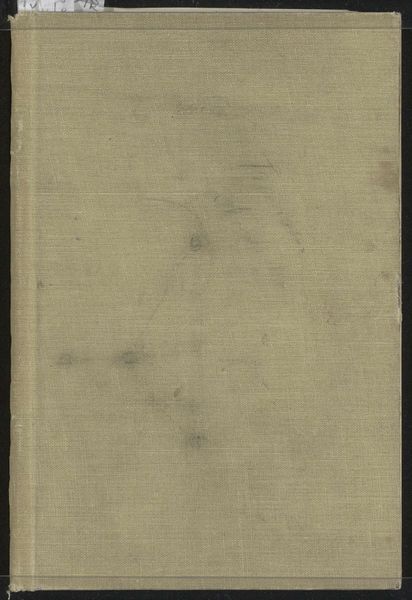
Dimensions: height 170 mm, width 110 mm, thickness 5 mm, width 217 mm
Copyright: Rijks Museum: Open Domain
Curator: This is Sketchbook LIX with 21 pages by Isaac Israels, dating from 1887 to 1934. It's currently held in the Rijksmuseum. Editor: At first glance, there's a minimalist austerity about the cover. A kind of quiet simplicity. The neutral paper and faint handwritten markings are almost ghost-like. Curator: Absolutely. Considering Israels’ social milieu, especially his focus on figures existing on the fringes of society, one may examine how even a mundane sketchbook acts as a silent witness, a potential recorder of marginal stories. Did the subjects he depicted have access to paper? How might they have captured their experiences, absent the privilege to record? Editor: You draw attention to the material itself as part of the story, that it acts as a visual and even structural element that influences our perception, something intrinsic, rather than separate from the stories. Note the paper’s slight unevenness and the worn edges: these, alongside the blue ink, establish an almost tactile visual quality, beckoning to the viewer, while hinting to all the drawings, in ink or watercolor, it holds inside. Curator: Considering Israels was an Impressionist, this artifact introduces a conceptual departure. The sketchbook, though seemingly plain, invites an investigation into representation, and questions whether access to the tools of artistic expression themselves created new dynamics in representation and documentation during this period. This isn’t just a collection of drawings. It's also about access, or a lack thereof. It touches on socioeconomic structures, making even its quiet aesthetic a powerful commentary. Editor: It shifts my thinking. The sketchbook then transcends pure form; its rough appearance suggests artistic preparation, the structural organization and careful binding all emphasize an artist's careful intention. Curator: Precisely! We are not only seeing an artist's tool but an artist’s social position. Editor: Yes. Ultimately, this seemingly blank piece asks us to decode how what we see on the surface only partially represents a greater, multifaceted reality, contained within and alluding to the social experience.
Comments
No comments
Be the first to comment and join the conversation on the ultimate creative platform.
